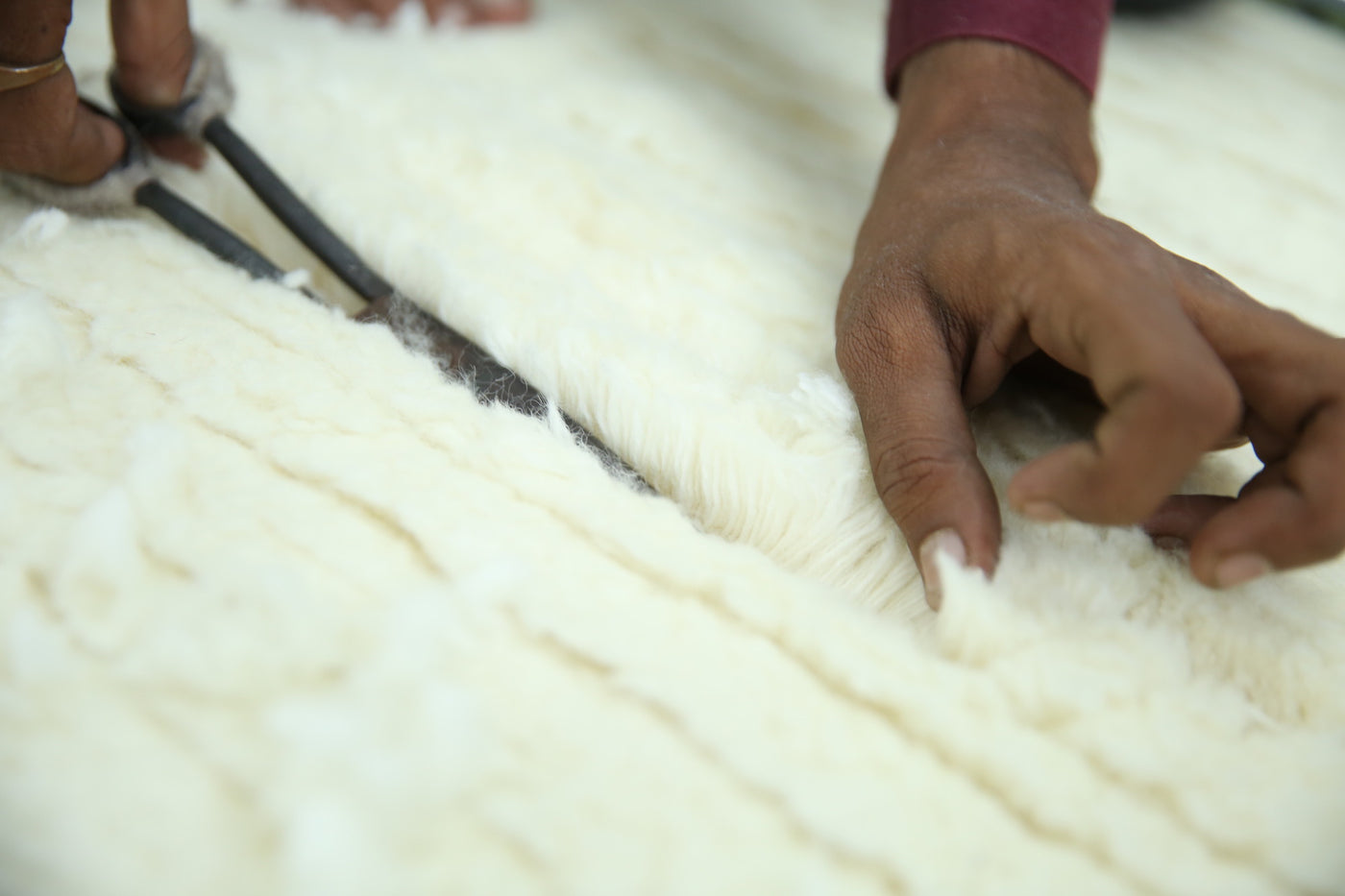Did you know there are many steps required to finish a handknotted rug after it leaves the artisan’s loom?
Each of our handmade rugs come to life as a creative collaboration between our designer, the raw materials, the artisan weaver, and the finishing craftsman.
We are so proud of our handmade rug process and the talented people who ensure Enkay’s quality is upheld for each and every step of the way. Here’s a peek into the nine finishing steps of our handmade rug process that occurs between the loom and your home.
1. Measurement & Knot Counting
Handknotting is an extremely laborious and personal process that artisans do in their homes. When the process is complete and the rug is removed from the loom, there can be some discrepancies in length and width due to natural warping of wool. Each knot in each row is counted by hand, ensuring the quality of each rug we produce is exactly the same. If a knot is missing, the rug is compared to the original design and the knot is surgically added into the row’s correct spot.
The back of each rug is lightly burned with a torch to singe the wool and increase the durability of the rug. This removes any loose strands, and also tightens the knots in their position. Once the burning is complete, the rug is brushed with a natural bristle broom to remove dust and particles.

The entire rug is rolled and submerged in a sanitizing bath where the fibers fully absorb all the cleaning liquid. It is then laid flat on the ground where a team of cleaners use wooden oar-like paddles to push the water through the fibers and draw out impurities. These oar strokes are done in sync so the rug is not torn or warped, and each pass tightens the knots even further. Each rug is dipped and washed for eight hours.

|
|

5. Cutting
When an artisan is finished weaving a rug, they bind the edges together using the warp and weft (the lengthwise and crosswise yarn strands) from the original loom process. Once the rug is washed and the knots have been tightened, this binding is no longer needed. To remove it, each rug is cut to the correct size by hand using large shears.

6. Binding
To maintain the size and shape after removing the original artisan’s binding, a finishing binding is applied to the edge of the rugs by hand. The threads can be made into tassels for a more traditional rug like the Raksha, or tight knots for a modern straight edge like the Sambhar.

|
|
This process, which translates to “Finding the Flower”, comes from the traditional act of hand-embossing floral patterns within a rug’s design to make the details visually pop. A craftsman will use a special pair of shears to cut into the wool at the base and build movement and detail into the design’s pattern. Each rug is done individually but must result in the exact same design to ensure consistency and maintain rug quality. This is an extremely labor intensive and highly skilled step.

|
|
The final inspection ensures that the size, design, pile, and quality of the rug is exactly as it should be. Many hands contribute to each rug, and each person’s unique involvement brings humanity and love to the rug’s fibers. This is the last step of quality control that we take very seriously so that our brand’s legacy is one of long lasting, high-quality handmade rugs.

9. Packaging
Each rug is packaged by a team of workers. It is rolled evenly and tightly to endure international transit and ensure there are no damages during transportation. Each rug once lived 24/7 on the loom at the artisans’ home, and it is with great pride that we send our rugs directly to your home to become a treasured part of your story.

There are so many steps that goes into Enkay’s high quality rugs. We take great pride in the highly detailed processes we uphold, and love sharing this knowledge with our customers. To check out our entire collection or learn more about our mission, visit Enkay.com.
